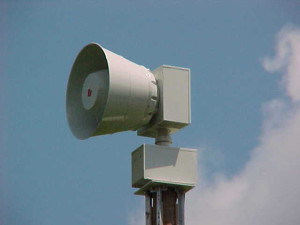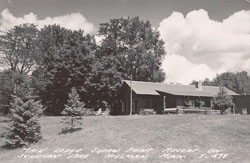Severe Weather
 Be aware of weather
Be aware of weather
The National Weather Service (NWS) is an agency of the United States government tasked with providing weather forecasts, public warnings, and other weather-related products to organizations and the public for the purposes of protection, safety, and general information.
The Lake Sullivan area forecast office of the NWS is located in Chanhassen in the Twin Cities. The NWS offers valuable information for:
Current weather conditions
Weather forecasts
Weather safety
Current weather radar
Weather history
Federalk Emergency Management Agency (FEMA)
American Red Cross
NOAA Radio
Click here to view the NWS information for the Lake Sullivan area.
Lake Sullivan’s Outdoor Warning Siren
Lake Sullivan’s Outdoor Warning Siren is located on the north side of the lake. The outdoor warning sirens represent only one part of a broader public emergency notification system. Other components might include: NOAA All-Hazards Radio, law enforcement, direct dialing/automated notification systems, and the media. Sirens are used to alert citizens who are outdoors of an imminent hazard and prompt them to seek additional information on the threat (timing, location, and severity).
Siren activation recommend for:
1) Tornado Warning
Issued by the National Weather Service
Tornado or funnel cloud reported by a trained spotter (law enforcement, fire department official, emergency management agency)
2) Severe Thunderstorms
Issued by the National Weather Service
Winds 70 mph or greater forecast or occurring
Warnings are officially issued by the National Weather Service (Chanhassen, MN) and are received at all three Public Safety Answering Points (PSAP)/911 Communication Centers in Morrsion County. The official warning is received via the Metropolitan Incident Command Radio Network (MICRN) and the National Law Enforcement Telecommunications Systems (NLTS).
National Weather Service warnings define the area threatened by the storm and include information about the history and/or potential of the specific storm. In addition, trained spotters such as law enforcement, fire, and emergency management officials may provide real-time reports of an imminent threat approaching or occurring in the community. When a warning includes the specific hazards defined above or when trained spotters report any of these hazardous conditions, sirens should be activated for all jurisdictions in the threatened area. Because of technology limitations and the configuration of siren activation systems, there may be areas adjacent to the threatened area, but outside the official warning boundaries that are warned as a precaution. People in or near the warned areas should always seek additional information from reliable sources such as NOAA All-Hazards Radio or the local media.







